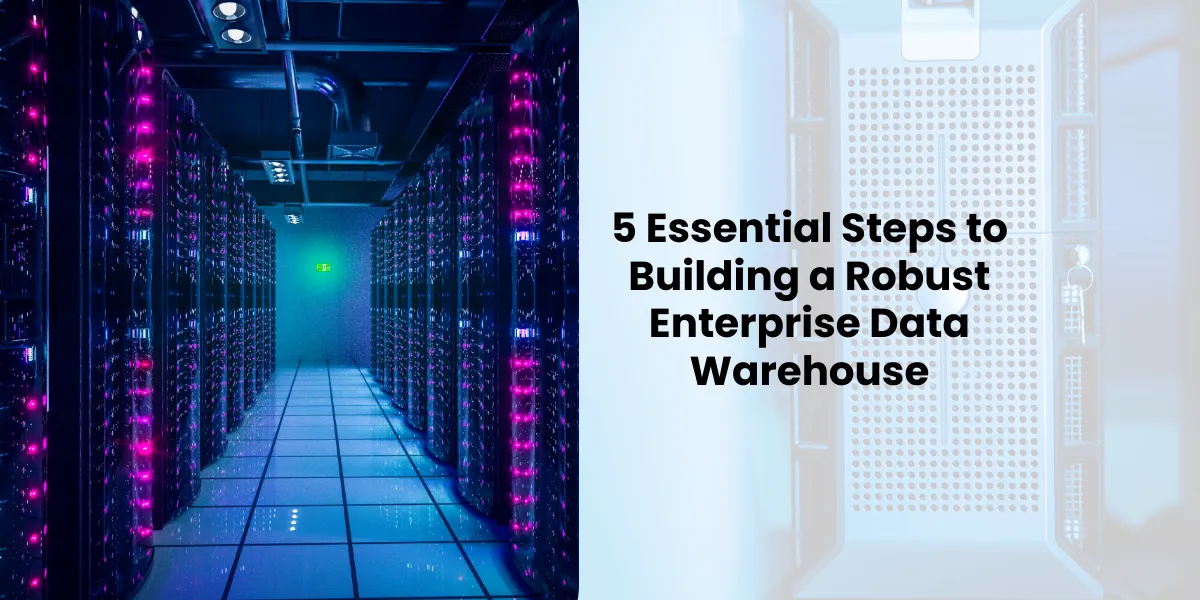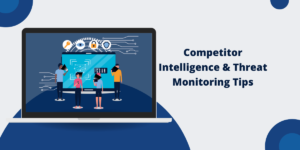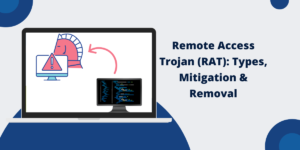In today’s data-driven world, enterprises are flooded with vast amounts of information. However, without a structured approach to managing this data, organizations can miss critical insights that fuel growth and innovation. An enterprise data warehouse (EDW) serves as the backbone for data-driven decision-making, enabling seamless storage, integration, and analysis of organizational data.
This article delves into the five essential steps to building a robust EDW. Unlike traditional discussions, we’ll explore seldom-discussed strategies that focus on scalability, flexibility, and the evolving role of advanced analytics. Whether you’re a software developer, data architect, or IT decision-maker, these insights will help you create a data warehouse capable of supporting your business goals today and into the future.
5 Best Steps to Building a Robust Enterprise Data Warehouse
- Define Business Goals and Data Strategy
- Design a Scalable and Flexible Architecture
- Implement Robust Data Integration and ETL Processes
- Optimize Performance and Scalability
- Enable Advanced Analytics and Business Intelligence
Define Business Goals and Data Strategy
Understanding the Role of an EDW in Achieving Business Goals
Before building an EDW, it’s essential to define how it will contribute to your organization’s objectives. For example, does your business prioritize customer segmentation, financial forecasting, or operational efficiency? Aligning your EDW goals with broader business KPIs ensures that every decision—technical or strategic—is purpose-driven.
Identifying and Engaging Stakeholders
Many EDW projects falter due to misalignment among stakeholders. It’s critical to involve leaders from IT, business units, and analytics teams early in the process. Establish a shared vision, identify overlapping needs, and secure buy-in. Engaging diverse perspectives ensures the EDW serves as a unified data platform that meets the expectations of all departments.
Design a Scalable and Flexible Architecture
Choosing the Right EDW Model: On-Premises, Cloud, or Hybrid
The choice of deployment model is pivotal. Cloud solutions like Snowflake offer elasticity and speed to market, while on-premises EDWs provide tighter control over sensitive data. A hybrid model combines these benefits, giving organizations the flexibility to balance cost, compliance, and performance.
Data Modeling for Scalability and Performance
To build a resilient EDW, prioritize data modeling techniques that ensure efficient querying and storage. Below is a comparison of popular data modeling approaches:
| Model | Use Case | Advantages | Challenges |
|---|---|---|---|
| Star Schema | Simplified reporting for BI tools | Faster query performance, intuitive | Less suitable for complex queries |
| Snowflake | Complex data relationships | Reduces data redundancy | Slower joins, requires expertise |
| Normalized | Operational databases with detailed data | Efficient storage, minimizes duplication | Complex to query, harder to maintain |
Implement Robust Data Integration and ETL Processes
Selecting the Right ETL Tools and Frameworks
A robust EDW thrives on seamless integration of data from diverse sources. ETL tools like Apache NiFi and Talend offer strong capabilities for handling complex transformations, while ELT frameworks like dbt are ideal for leveraging modern data warehouses. Select a tool that aligns with your organization’s data ecosystem and technical expertise.
Establishing Data Governance and Quality Controls
Data integrity is non-negotiable. Implement automated quality checks, anomaly detection, and validation rules at every stage of the ETL process. Beyond technology, instill a culture of accountability with governance policies that prioritize security, privacy, and compliance, particularly for industries bound by regulations like GDPR or HIPAA.
Optimize Performance and Scalability
Leveraging Indexing and Partitioning
As data grows, maintaining performance becomes increasingly challenging. Indexing accelerates query execution by pre-organizing data, while partitioning divides large datasets into smaller, manageable chunks. These strategies work best when tailored to specific query patterns and usage scenarios.
Implementing Monitoring and Maintenance Plans
Proactive monitoring ensures the EDW performs optimally at all times. Use tools like AWS CloudWatch or custom scripts to track key metrics like query latency, storage usage, and ETL runtimes. Combine these with routine maintenance, such as updating metadata and rebalancing workloads, to preempt bottlenecks.
Enable Advanced Analytics and Business Intelligence
Integrating BI Tools and Dashboards
To unlock the EDW’s potential, connect it with powerful BI tools like Tableau, Power BI, or Looker. Create role-based dashboards that allow business users to explore data without technical barriers. Prioritize usability, ensuring that visualizations drive actionable insights rather than overwhelm users with complexity.
Supporting Predictive and Prescriptive Analytics
An often-overlooked advantage of a robust EDW is its ability to support advanced analytics. By integrating machine learning models, enterprises can use historical data to predict trends and recommend future actions. For example, retail businesses can optimize inventory based on predictive demand analysis.
Final Words
A robust enterprise data warehouse is more than a storage solution—it’s a strategic enabler of growth and innovation. By following these five steps, enterprises can build an EDW that not only meets today’s needs but also adapts to tomorrow’s challenges. From defining a clear data strategy to enabling advanced analytics, every stage is an opportunity to create long-term business value.

Priya Mervana
 Verified Web Security Experts
Verified Web Security Experts
Priya Mervana is working at SSLInsights.com as a web security expert with over 10 years of experience writing about encryption, SSL certificates, and online privacy. She aims to make complex security topics easily understandable for everyday internet users.



